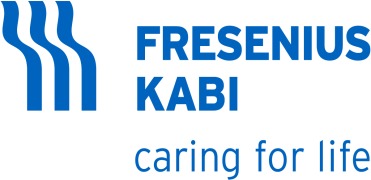MDR – How to collect post-market clinical follow-up data (PMCF): Connect to Frankfurt on-demand
.png)
In this Connect to Frankfurt session, Philipp Annecke, Junior Key Account Manager and Heinrich Martens, VP Regulatory Affairs of Fresenius Kabi (Bad Homburg, Germany) present guidances from the Medical Devices Regulation on clinical data evaluation for medical devices, and how manufacturers can select the right method and strategy for collecting post-market clinical follow-up data (PMCF)
As part of our conference track on Packaging, Drug Delivery & Patient Centricity, this session explores strategies for the collection of post-market clinical follow-up data, and the importance of a robust post-market surveillance and follow-up strategy (PMS).
PMS according to the Medical Devices Regulation
The Medical Devices Regulation (MDR) is a regulation requiring rigorous and detailed evaluation of clinical data for medical devices. This poses a challenge for many in the medical devices industry looking to invest time and costs into development and innovation – what support exists for MDR-compliant technical files for medical devices? Medical devices manufacturers can often be left wondering how to implement a successful MDR project to collect PMCF data.
With an introduction the scope of the session from Annecke, Martens goes on to detail important considerations that must be given to PMS and PMCF data collection.
What is PMS and PMCF?
Martens describes PMS as a proactive and systematic process for deriving necessary corrective and preventive action from information about medical devices already existing on the market. It will become quite clear throughout the session that the operative action is ‘proactive’ - actively collecting data (both proactive and reactive) to remain vigilant in a company’s risk management process.
While a medical device will no doubt be tested throughout the development and manufacturing process to ensure patient safety before it is placed on the market, Martens emphasizes that risks do not end once the item is available for use - certain risks may not reveal themselves until it has been used regularly over time. Martens lists various aims of PMS, including systematically identifying risks in practical use of a product, checking the ‘field’ performance of a product, continuously updating benefit – risk assessments and initiating necessary measures rapidly, and drawing necessary conclusions to determine, implement, and monitor either preventive and/or corrective actions. It is only through a continuous, systematic, and active monitoring of a medical device after it has been placed on market can manufacturers say for certain whether a product offers its promised benefits without uncontrolled risks.
Several device classes/categories exist, and differing frequencies for updates are recommended for each. Though some medical devices may need an annual update, some may be fine with one every 4 years. Either way, Martens emphasizes that PMS is not a one-time event – it must be an ongoing improvement process implemented into a company’s risk management and quality assurance system. PMS can interact with existing internal procedures, Martens reassures, fitting in with clinical evaluation and risk management, though he indicates that it will not be an overnight process. So then how can a PMS/PMCF data collection and management system be implemented?
PMS/PMCF process
Martens demonstrates how a PMS process can be implemented by utilising Fresenius Kabi’s own SOP as an example. Starting with the MDR Clinical Evaluation, consisting of a plan and report adhering to the regulatory body, the process then moves on to a PMS plan, a PMCF plan, and subsequent reports for the data collected from each, before looping back to the MDR Clinical Evaluation. By presenting the plan as a circle of steps and actions to take, Martens reiterates his point for an ongoing process of planning, data collection, evaluation, and analysis, and reporting when it comes to PMS/PMCF data.
As an additional highlight, Martens presents technical documentation on PMS giving guidance on planning and reporting, of which there exist several different documents. With so many different documentations, Martens underscores the importance of having trained individuals familiar with all guidance documents to streamline the planning and reporting process for a company.
Martens also invests a bit of time describing the difference between PMS and PMCF. The clinical aspects are fully emphasized in PMCF data, defining the proactive clinical need for a medical device. Patient need and use are proved in such follow-up studies with statistical rationales. PMS plans offer a broader overview of the market the medical device is on, observing similar devices on the market and gathering market feedback and complaints. A PMS plan may include a PMCF data as part of its process to remain vigilant in its conclusion of the benefit–risk determination.
PMCF according to the MDR
The MDR asserts that the legal manufacturer is responsible for the collection of product data in a proactive manner. Martens reiterates the importance of a proactive approach to clinical data collection. Such measures do not wait for complaints or risks to reveal themselves, but instead systematically collect and review experience gained from devices placed on the market.
So what makes a good, proactive PMCF data collection process?
Martens offers a case study on the collection of PMCF information with a PMCF survey for health care professionals. He runs through the important basic requirements for a survey, including the design of the survey aimed at health care professionals, the determination of appropriate sample sizes, and any data collection and statistical analysis tools that will make PMCF data collection easier and more reliable.
Summary
PMS and PMCF data, as emphasized by Martens, must remain a proactive and ongoing step in a manufacturers process of releasing a medical product to market. While different companies and tools might exist to streamline the data collection, evaluation, and reporting process, it is ultimately up to manufacturers of medical devices to ensure that patient safety continues beyond the clinic and into the market.
Discover more Connect to Frankfurt 2022 on-demand sessions here.

Related News
-
News Streamlined Development for Efficient Production of Bispecific Molecules: Connect to Frankfurt on-demand
In this Connect to Frankfurt session, Séverine Fagète, VP, Cell Line Development Services at Selexis (Geneva, Switzerland), and Brandon Brino (Durham, USA), Process Development Scientist and Group Leader at KBI Biopharma, present an overv... -
News Sourcing Responsibly – putting ESG principles into practice: Connect to Frankfurt on-demand
In this Connect to Frankfurt session, Enric Bosch, Global Third Party manager, Chemicals at Boehringer Ingelheim, investigates the growing shift towards environmental, social, and governance (ESG) principles and how to put responsible sourcing for phar... -
News Operational excellence in technology transfer: Connect to Frankfurt on-demand
In this Connect to Frankfurt session, Clarissa J. Van Allen, Global Senior Manager, Technology Transfer, Oral Solid Dose at Thermo Fisher Scientific, discusses the value of an effective and efficient technology transfer project in the drug development ... -
News Connect to Frankfurt - Five reasons to tune in
Get a jump-start on your CPHI Frankfurt experience with exclusive access to our online event platform. -
News CPHI North America Lookahead: Facilitating ‘meaningful conversations’ on needs and solutions
CPHI NA takes place as a SMART event this year, with online learning and networking from May 9-27 and an in-person event from May 17-19 in Philadelphia, PA. -
News Early development demand continues to boost prospects for smaller CDMOs: CPHI Worldwide panel
The increasing outsourcing trend among pharmaceutical companies represents a promising opportunity for CDMOs. This panel discussion at CPHI Worldwide touched upon some of the opportunities, hurdles, and trends ahead for the CDMO market -
News CPHI Worldwide is back, and this time it’s hybrid
A new in-person and online edition of CPHI Worldwide, transforming your event experience. -
News 5 Highlights from the Pharmapack Europe Content Programme
Pharmapack Europe is back! Join us online from 27 September as we kick off our two-week long content programme, a great precursor to the in-person event from 13-14 October at the Paris Expo Porte de Versailles.
Position your company at the heart of the global Pharma industry with a CPHI Online membership
-
Your products and solutions visible to thousands of visitors within the largest Pharma marketplace
-
Generate high-quality, engaged leads for your business, all year round
-
Promote your business as the industry’s thought-leader by hosting your reports, brochures and videos within your profile
-
Your company’s profile boosted at all participating CPHI events
-
An easy-to-use platform with a detailed dashboard showing your leads and performance







